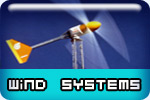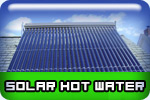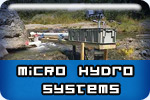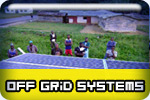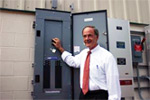Why Renewable Energy? Part 2
On the previous page, we reviewed several good reasons to replace fossil fuel and nuclear powered generators as our primary means of energy production.
Now, let’s return to our original question, “Why should we invest in and use renewable energy systems?” The short answer, this time, is: “Because they offer many immediate and long term benefits.”
There are some simple things we can each do to reduce the amount of energy we consume every day. We can choose to use energy efficient appliances when possible; replace incandescent light bulbs with compact florescent ones; and generally waste less electricity needlessly.
Even as we strive toward greater energy efficiency, and opt for making better choices about how we use power, our modern lifestyles seem to require ever more of it! Since most of us would prefer not to give up our computers, security systems, air conditioning, home entertainment centers, or whatever other electric powered items we enjoy the use of in our daily lives, we need to find better ways to power them. Enter renewable energy….
Some of the great benefits of solar and wind generated electricity are:
It is clean: Once installed, both photo-voltaic solar panels and small wind turbines generate electricity completely emission free. Every kilowatt hour (kWh) of clean electricity you produce at home can replace approximately 3.3 kWh of energy consumed in delivering the equivalent 1 kWh to your home by the utility company. Here is a vivid example of the environmental benefit of solar power: A single 187 watt solar panel can produce enough electricity in 30 years to offset over 13,600 pounds of CO2 (the ‘greenhouse effect’ gas) from utility power – even after subtracting any CO2 produced during the manufacture of the panel. Imagine what each and every roof covered with these panels could do for our air quality! Clean energy production = cleaner air!
It is made from abundant, renewable resources: Enough solar radiation hits the earth’s surface every minute to supply all of the world’s energy demands for an entire year. A mere 100 square mile array of today’s efficient solar panels in sunny Nevada could supply all of America’s daily electricity demand. Okay… we don’t all live in Nevada, but the sun shines down on us, no matter where we live – and solar panels make electricity even on overcast days.
Wind is also abundant in many parts of the United States. The U.S. Department of Energy estimates that wind energy could supply up to 20% of American electricity demand, annually. Though wind power might not be abundant in all locations, one of the great things about it is that it is usually prominent in situations when sunlight is diminished (in winter months, at northern latitudes, and during inclement weather, for example). Chances are your location has sufficient sunlight, wind, or both, to make generating your own energy feasible.
It is sustainable: Harvesting sunlight and wind doesn’t diminish our supply of them. As long as the sun shines and the wind blows, we can generate electricity. Using solar and wind power are long-term solutions to our energy needs, since they don’t depend on fuels that will eventually run out.
It is domestically supplied and secure: Sunlight and wind are available in abundance domestically. The more renewable energy we produce at home, the more we reducing our dependence on international fuel supplies. Localized production also allows us to rely less upon large centralized power plants that are vulnerable to various disruptions and outages. Producing a greater percentage of our energy locally, and from domestic resources, makes our energy infrastructure more stable and secure.
It is reliable: Your solar and/or wind power generating system can continue to produce electricity, even when your supply from the utility grid is interrupted, and your neighbors are without power. Optionally, you can add battery back-up capability to your system and store power, so you’ll have it available even when your system isn’t actively making electricity. This is a particularly compelling benefit for those who live in locations subject to frequent or prolonged grid outages, or to those for whom a total power outage is critical to health or business productivity.
It allows you to help others in your community! Any energy you generate for your own consumption equates to less demand on your local power grid, which reduces the likelihood of brown-outs affecting the people in your community. Also, when your production exceeds your consumption, you can actually sell your surplus energy back to the utility company, and push it out onto the grid – again, helping to reduce brown-outs. Anyway you look at it, investing in a Wise Power System benefits all of the people in your community (and everyone else who breaths!).
* * You might have noticed that sentence about ‘selling energy back to the utility company’ – ah, ha! Yes, there are some economic benefits of using wind and solar power, of course! Since there are many variables involved in determining these benefits (such as the system size, your energy usage, and the financial incentives available in your location), we’ve put them on their own page. Click through to the economics page to explore the financial analysis of owning a Wise Power System.


